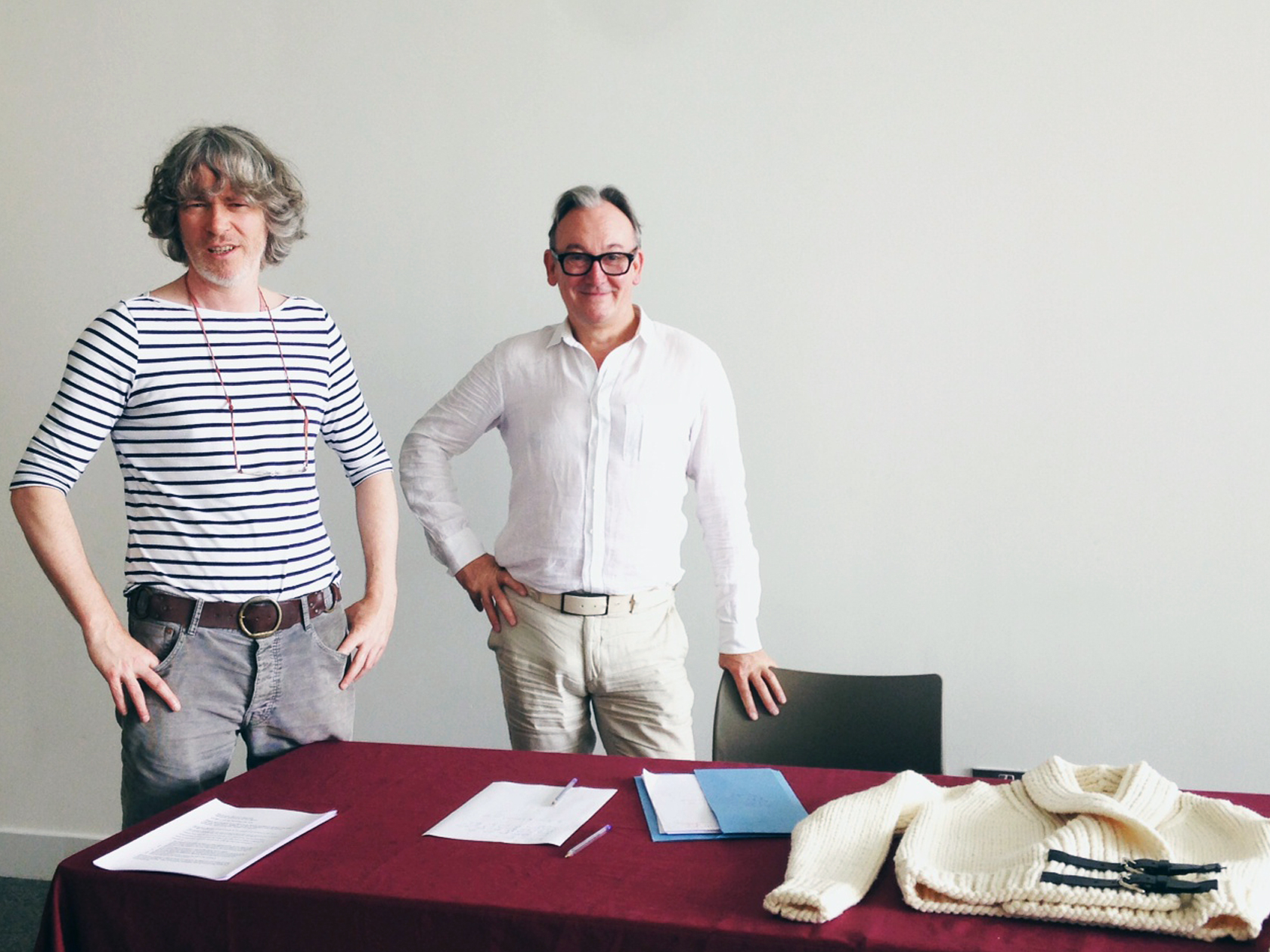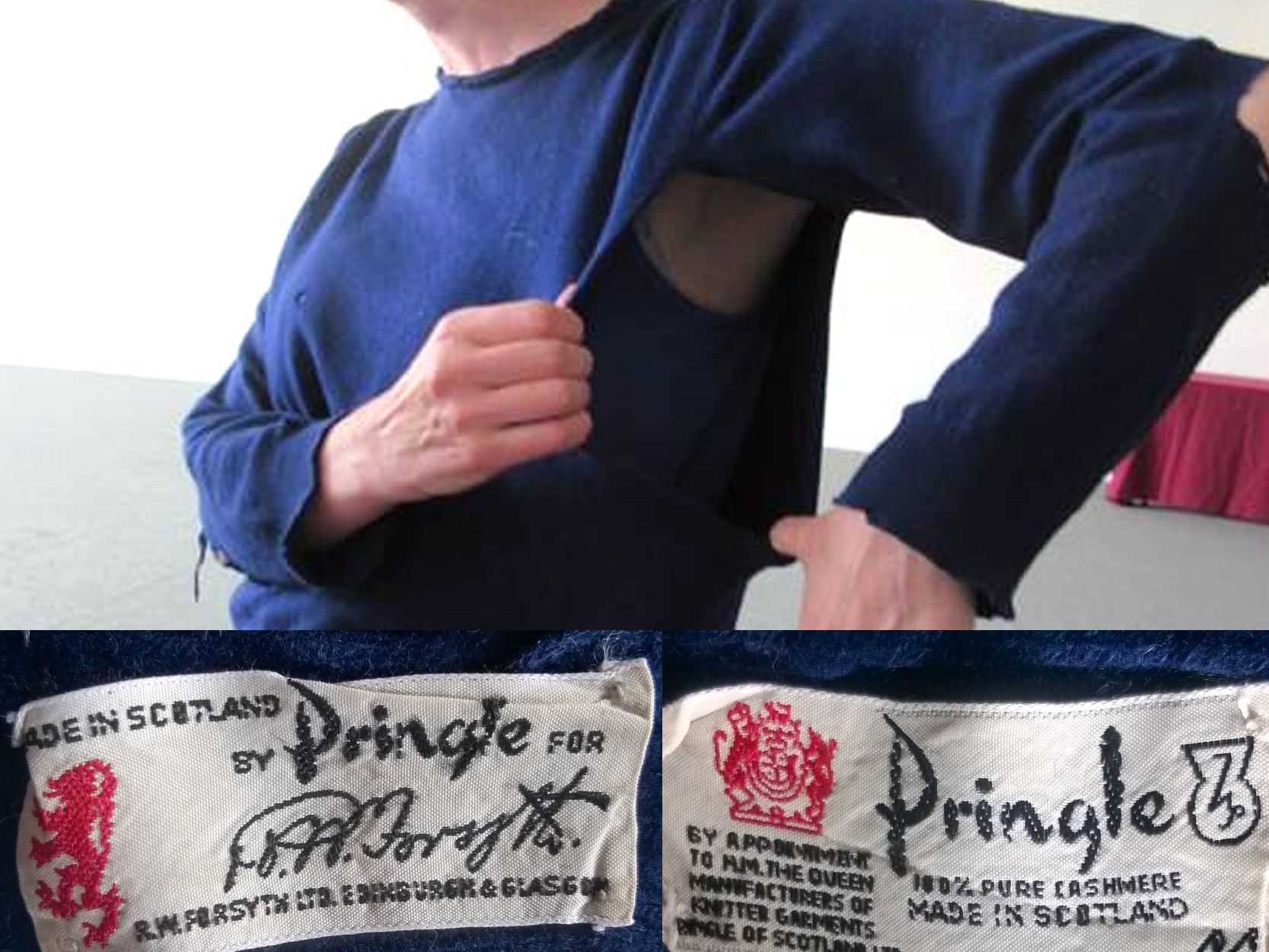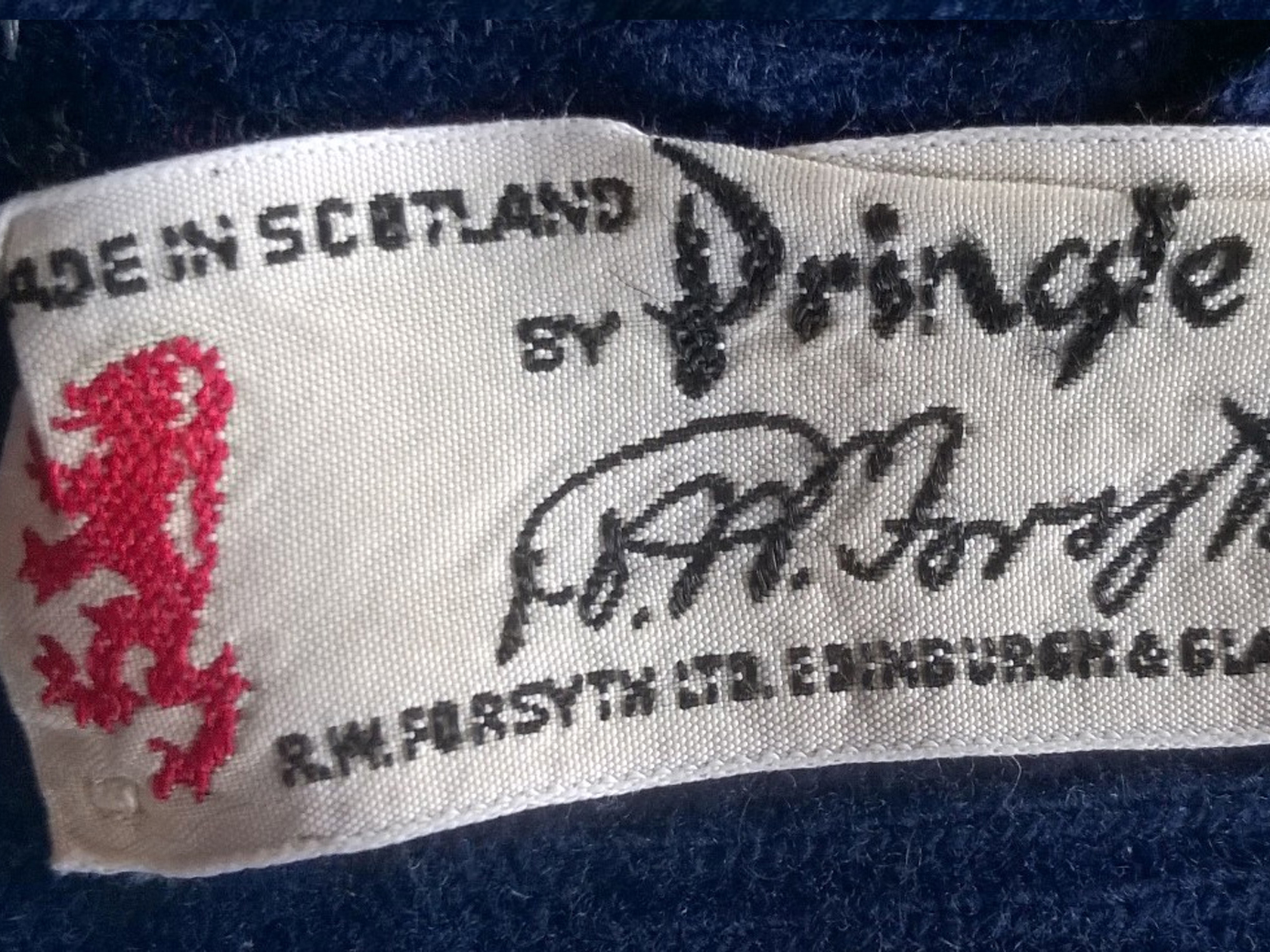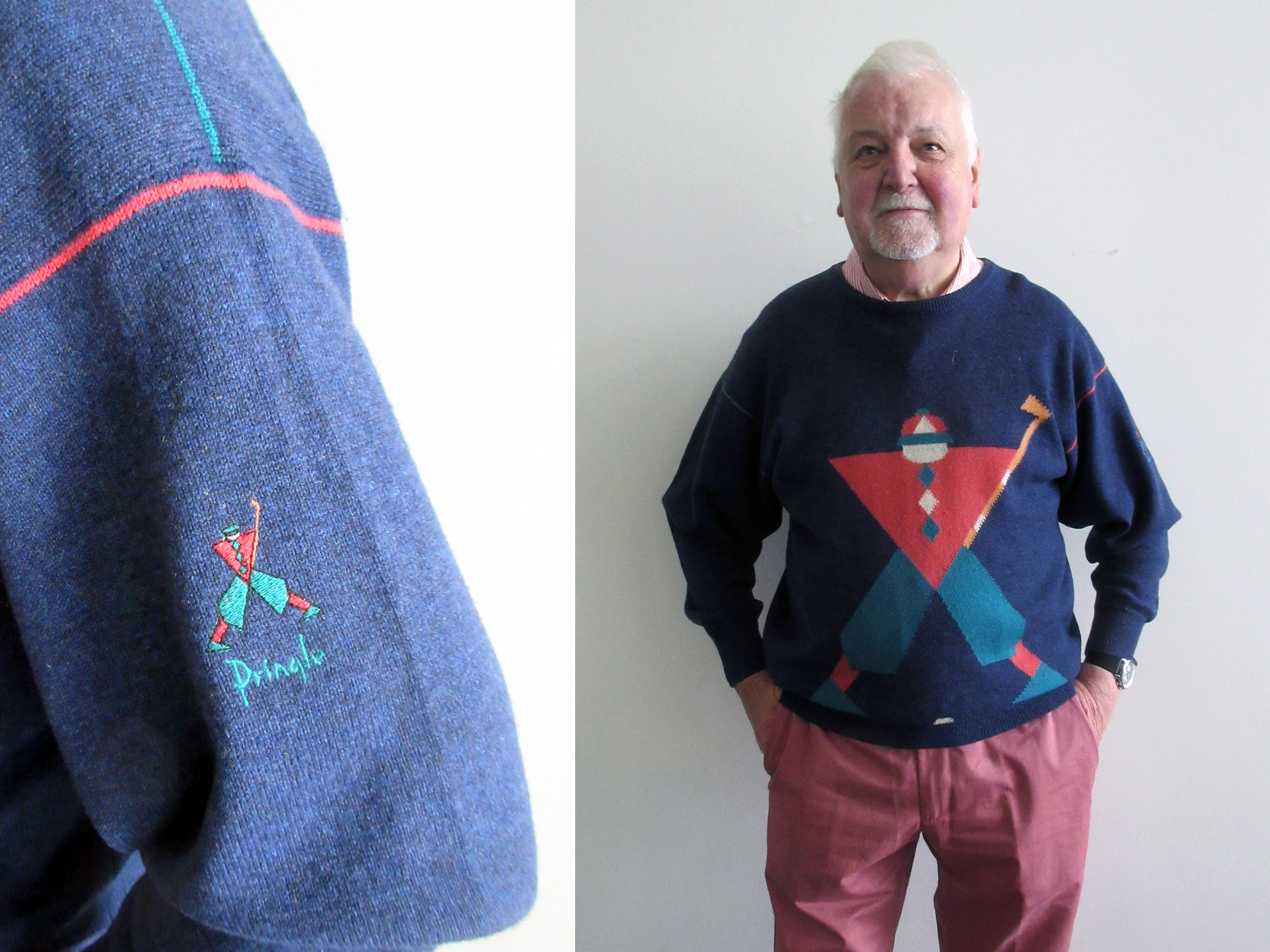Pringle of Scotland has a very particular place in the affections of many visitors to the Fully Fashioned: The Pringle of Scotland Story exhibition, which commemorates its 200th anniversary. They come not only to admire the style and innovation of a brand that stretches back to the times of the Napoleonic Wars, but to remember Pringle items that they once owned or to reflect on their time working for the Borders textile industry. The Pringle opinion service on Sunday 26 July was a new initiative for National Museums Scotland that was inspired by the very personal connection people feel to their Pringles!

Jamie Mulherron, the exhibition curator, was on hand to provide an expert opinion on whatever might turn up. I helped him lay out a few Pringle items from the Museum’s collection that could provide useful comparisons or points of conversation. We had a cashmere mini sweater dress from 1962-4, a couple of sweaters from 1976 and a hand-knit ‘Tamzin’ cardigan in cream wool from 2003.
The space soon became a collecting point for non-Pringle wearers who were intrigued by the garments on the tables including one lady (with beautiful baby Persephone), who remembered ruining her ‘Tamzin’ knit by putting it in the washing machine…. the leather straps caused the problem.

Our first opinion was supplied by Kathryn Malcolm, who shyly revealed her precious Pringle concealed beneath her jacket. It’s true, the jumper had seen better days, but it remains a cherished possession – what Kathryn terms her ‘bottom drawer’ woolly. The jumper was given to Kathryn by her aunty Nora in the 1980s but probably dates from the 1960s. Over time Kathryn has customised it either deliberately – by removing the roll neck that was too tight – or through wear by using it when running. Apparently it’s the friction of elbow movement that has seen the elbows give out! Jamie agreed how good wool is as a material to wear for running (he’d completed a marathon the day before – what a hero!) and it’s a quality that Pringle exploited in the sportswear that they developed particularly after the First World War.

The labels tell us that the jumper was made by Pringle for Forsyth’s department store, which chimes with Kathryn’s recollection of her aunts shopping there. She feels that wool has a memory and that this garment connects her with her relations, many of whom have died, and the near distant past.

Other visitors wore Pringle knitwear that hadn’t been subjected to quite the same degree of vigorous activity – although one piece in particular spoke eloquently of the connection between Pringle and sportswear. David Storrier arrived wearing a sweater with the ‘Geometric George’ design that was produced in the 1990s and was famously worn by the golfer Nick Faldo.
The design was produced on an intarsia knitting machine that was developed by Pringle in 1958. The intarsia technique allowed multiple colours and designs to be brought together apparently seamlessly in one garment. The intarsia knitting department was run by Walker Stewart, who was fondly remembered by another visitor to the opinions day, Bobby MacDonald. Bobby had worked with Walker from the age of 15 in 1961 and travelled around the world demonstrating the machine. Bobby visited the Museum with family and friends from Hawick and met other Hawick residents at the event, all of whom retained very vivid and special memories of Pringle’s past.
Fully Fashioned: The Pringle of Scotland Story continues until the 16 August
There is a chance to meet James in a curator-led tour of the Fully Fashioned exhibition at the Museum After Hours event on 14 August 2015.